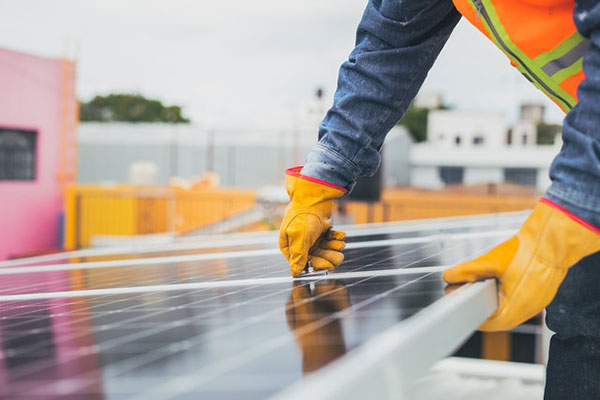Three Things You Need to Know to Understand How Solar Works

A solar panel is equipment that absorbs solar energy and transforms it into heat or, in many cases, electricity. It’s also called a photovoltaic cell because it comprises multiple cells that convert sunlight into electricity. Only the sun can be used as a source of energy to create this kind of solar panel. The panels are designed to face the sun to ensure that the sun’s rays can absorb the most energy. If there is more solar energy available and the more power is produced.
 How Solar Panel Works
How Solar Panel Works
Many people find the idea of absorbing the sun’s energy and using that energy to power the homes of their business or transportation is a mysterious thing. In just easy steps, you will not only save money on your electric bill but can also help create a more long-lasting future by reducing your carbon footprint. Here’s how solar panels produce electricity:
1. Solar Panel Technology
They convert light into power that may be used to power your home, thus reducing your monthly utility costs. Solar panels come in various forms and sizes, and they use a range of solar cells technology. The best panels perform more efficiently by using every ounce of available solar energy through the daytime. The most efficient board can deliver 70% more power over 25 years than the cheapest panel could.
According to research that shows a solid copper base strengthens panels, as ultra-pure silicon gives the best solar energy transformation. Solar panels with a record efficiency of 24.2 percent produce 44% more power per square foot than panels made from other materials. This means that they will have significantly higher levels of solar energy.
It’s also important to ensure that solar panels are designed and checked to stand up to the harshest conditions, including temperature changes, strong winds, hail, humidity, and many more. When the solar panel’s design or construction isn’t high enough, it could produce less solar energy. A properly accredited installation can make solar energy for more than 40 years.
2. Solar Panel Installation
The installation of solar panels is crucial to producing solar energy after selecting the most reliable solar panel technology. Its roof, your home or office, areas on the ground, or a solar canopy are a few of the most commonly used locations to consider panel installation.
To assist you in preparing a permit packet, your solar provider will input your home’s dimensions into the Computer Assisted Design (CAD) tool. A normal solar system installation is only two or three days. After it is completed, the solar company has determined which region will produce the most solar energy and the number of panels to be installed.
3. System Monitoring
After the system is installed After it is installed, you can begin using solar energy as a source to power your lighting, computers, machines, and other electrical appliances in your office or your home as soon as you are ready. Your energy use is monitored using a utility meter that includes both ways. The solar energy generated but not used will earn you credits because it will feedback the utility system. If you’re not producing enough solar power throughout your daytime hours, the utility system still provides you with electricity. However, It can use any credits you earn to pay for the electricity during the day.
Take note that, based on where you reside and the amount of sunlight your panels receive daily, how much solar energy generated by your solar panels will fluctuate throughout the entire year. You can track your production through an online tracking system to see how much solar energy the panels can produce. Notify your solar provider when you notice any significant changes to ensure all is in order.
Read more about Home Inspection Checklist: What You Need to Prepare







